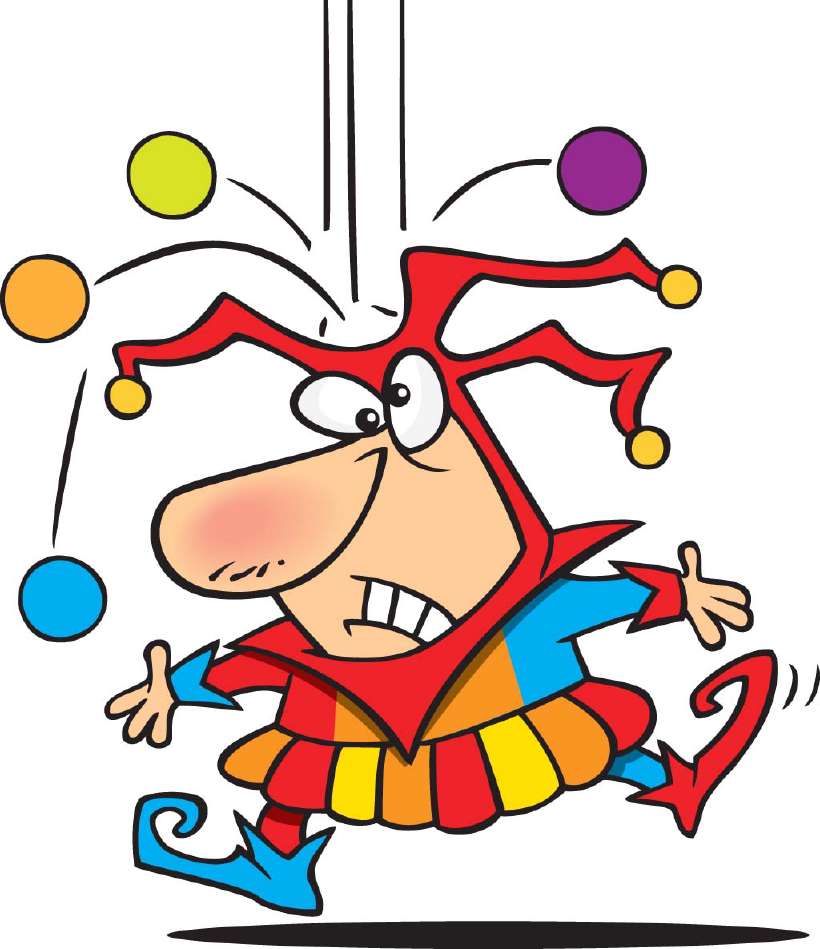How does a Juggler Juggle?
Home / Science for Kids / 5Ws & H For Kids / How does a Juggler Juggle?
Yesterday, after seeing a circus show, I made up my mind about a career. I was at home busy throwing an orange in the air with one hand to catch it while the other hand was passing me a second orange. I wanted to juggle oranges the same way a clown juggles balls.
I could manage it with two. But my hand started to fumble when it came to the third. The clown we saw yesterday was throwing plates in the air and I knew my mother would kill me if I broke any!

Juggling is something one sees at a circus. It is a performing art and quite difficult as I soon found out. So how do people master this art? Down the ages, there have been jugglers. In fact ancient Egyptians used to have jugglers. In a tomb unearthed at Egypt, there are pictures of a juggler dating to the Middle Kingdom period, roughly 1994 BC to 1781 BC (more than 3,700 years ago.)
In the 20th century, studies have been conducted to understand the art of juggling. In the 1970s, researchers at the world-famous Massachusetts Institute of Technology (MIT), in America, investigated how people master the art of juggling. The MIT juggling club, one of the oldest organisations devoted to juggling, was established.
 / [Shutterstock.com](http://www.shutterstock.com/?cr=00&pl=edit-00)](/media/how-does-a-juggler-juggle_hucd035058ecd13ffb56eaa58058981555_121826_820x0_resize_q60_box.jpg)
All amateurs start with juggling two or three balls in a “shower” or circle pattern with one hand throwing and the other catching. However, it is far easier to learn juggling if they attempt it by throwing the balls alternately with both hands in the “cascade” or the figure eight pattern.
Depending on one’s skill, it may take hours or days to learn to juggle three balls. The time increases to months to move on to four balls and years to master five or more object!
Someone has even set a world record in juggling: 12 rings, 11 balls and eight clubs. Actually it is easier to juggle rings and balls than clubs as the weight and grip also affects the rhythm of the thrower.
The main drawback is gravity, which limits the number of objects one can juggle at a time. Each object (ring, ball, club, plates, knives, etc) must be thrown high enough to allow the juggler time to deal with the other objects. The more the objects, more the height and speed necessary to keep it in the air.
Errors in timing the object or in throwing are the most common mistakes a juggler makes. If thrown low, the catch must be quick and it doesn’t leave time to correct mistakes. A higher throw does give more time but it also effectively shows up the mistakes you make to the audience.
Professionals use the low-throw technique. These jugglers also tend to concentrate on the object at its highest arc of the throw. They are thus, able to judge where and when the object would land. Any subsequent errors in the throw must therefore be anticipated in the catch.
To start with, one can start with bounce-juggling. You can bounce balls off the floor and catch it rather than throw it in the air. This is easier as the balls are caught at the lowest speed.
So, now that you are better informed on juggling, try it out. You only stand to miss a few balls. However, don’t try oranges as I found to my cost. In passing them from hand to hand, I gripped one too tightly and squished sticky juice all over my pants!
614 words |
6 minutes
Readability:
Grade 7 (12-13 year old children)
Based on Flesch–Kincaid readability scores
Filed under: 5ws and h
Tags: #circus
You may also be interested in these:
How do Human Cannonballs Fly?
What's Biting the Flea?
The Tale of a Circus Bear
Surprising Success